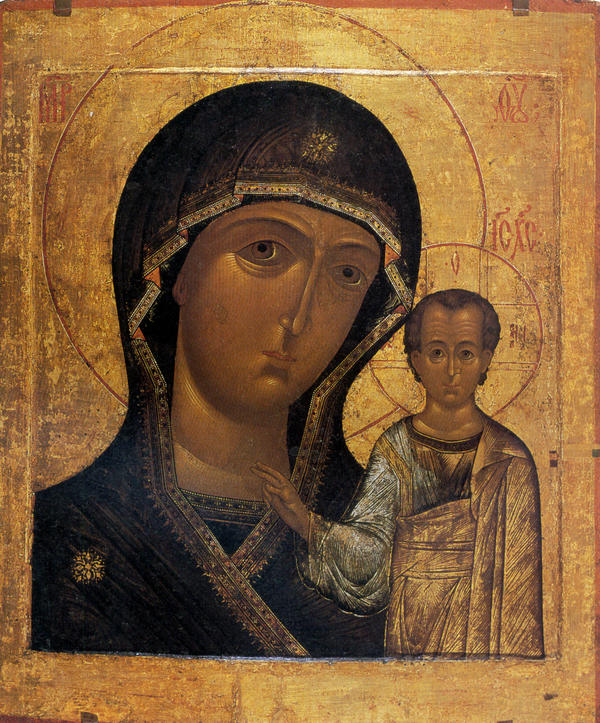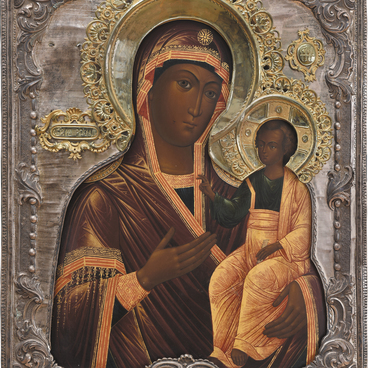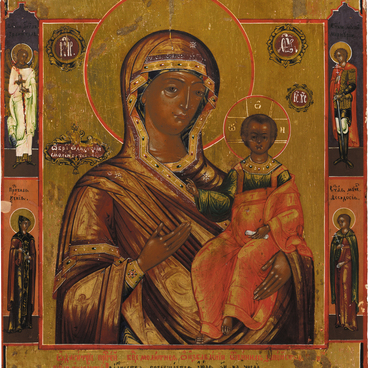Our Lady of Kazan is one of the most popular ways of depicting the Mother of God, which originally emerged on the Kazan icon of Our Lady in 1579. This image has no exact analogies in the Russian art of the XVI century, but is similar to Hodigitria - a common image type of the Virgin Mary with the Infant Christ. A distinctive feature of Our Lady of Kazan icons is that they depict the Virgin Mary’s bust with Christ standing. He is giving a blessing with his right hand and his left one is lowered, hidden by the clothes.
The icon from the collection of the Orenburg Museum of Fine Arts was painted in the mid- 19th century in the icon-painting villages of the Vladimir Province. This type of image is fully in keeping with the traditional Our Lady of Kazan depiction. Our Lady is looking at the viewer standing in front of the icon; her head is inclined to the Infant, who is giving a blessing with two fingers. There are traditional monograms above the nimbi of Our Lady and Christ.
The icon from the collection of the Orenburg Museum of Fine Arts was painted in the mid- 19th century in the icon-painting villages of the Vladimir Province. This type of image is fully in keeping with the traditional Our Lady of Kazan depiction. Our Lady is looking at the viewer standing in front of the icon; her head is inclined to the Infant, who is giving a blessing with two fingers. There are traditional monograms above the nimbi of Our Lady and Christ.




